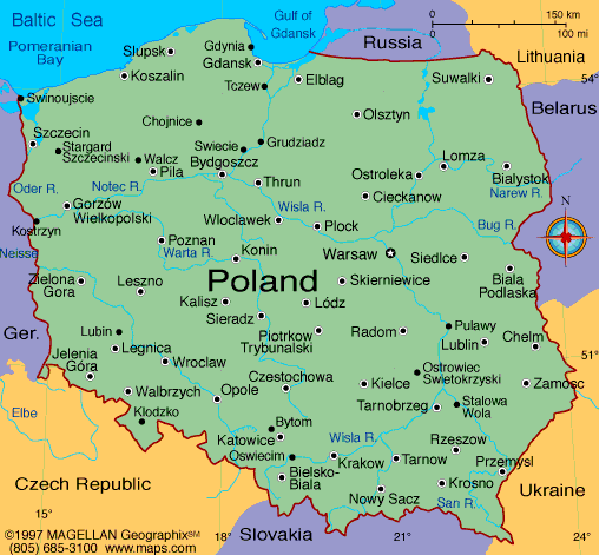A progress Report of Poland while celebrating its first decade in European Union
By Agha Iqrar Haroon
Development Observer for Central Asia and Eastern Europe
 Poland is completing its first decade in European Union (EU) on May 1, 2014. Polish are known for their hard work and instant learning from social changes therefore it was anticipated that it would perform well after joining EU.
Poland is completing its first decade in European Union (EU) on May 1, 2014. Polish are known for their hard work and instant learning from social changes therefore it was anticipated that it would perform well after joining EU.
After joining EU, Poland has become “Hot Destination” for tourists and over 140 million tourists have visited Polish cities. Warsaw airport is directly connected with one hundred cities of the world having direct flight connections to Warsaw now.
Liberalisation of air transport services has contributed to the dynamic development of air traffic and during 2004–2013, 185 million passengers passed through Polish airports enabled the entry of low-cost airlines into Poland; and made travelling in Europe easier for millions of Poles. In 2004–2013 as many as 82.8% of all Polish tourists travelled to EU Member States.
Implementation of EU legislation, phone and data roaming rates dropped fourfold in Poland. In 2007, only 9.2% of Polish citizens travelling to the EU used roaming services. By 2013, this number increased to as high as 60%. Within the country, 673 km of motorways have been built and 808 km of expressways have been built or modernised.

Experts of European economy are of the view that joining the EU structures does not automatically translate better economic performance and improved standard of living of any member country rather EU membership presents itself as an opportunity, not as a guarantee of development.
Experts maintain that it is up to the member country how it performs and get maximum economic and social results out of this opening. This depends how member country plans to fully capitalise on this opportunity and it depends on how the country decides to conduct its economic policy.
Poland was intelligent and it followed rapid modernisation of its economy and got higher confidence of global markets resulting in a more rapid inflow of foreign direct investments than other neighbouring EU states. Poland saw an investment and consumption boom, followed by rapid structural changes.
Poland converted its economic base and followed the model of higher share of services and a lower share of agriculture and this shift was possible due to higher productivity of the economy stimulated by technological progress and greater competition on the domestic market, the inflow of FDIs, increased production of medium and highly processed products.

Poland has moved up from the 48th position in 2004 to the 33rd position in 2013 in the IMD World Competitiveness Center ranking and achieved 48.7% growth in its GDP outperformed other countries in the region. Poland is the only country in the EU to avoid a recession. In 2008–2013, Poland’s total GDP increased over 20%. It was by far the best performance in the EU and its pace of growth, was faster than in other countries, made Poland reach two-thirds of the EU’s average level of economic development.
Before joining EU, GDP per capita in purchasing power standards amounted to 48.8% while in 2012, it amounted to 66.9%– an increase by 18.1 percentage points.
Economic growth has been accompanied by major changes in the labour market. Two million jobs have been created including half a million economically inactive people have been employed. In 2005-2012, the number of people at risk of poverty or social exclusion decreased by 7 million, and 1.3 million people were lifted out of poverty.
Poland has effectively increased its exports to EU countries, as well as to third countries. During the last decade, Poland’s share of exports within the EU grew twice up to 4%. It is the highest increase of all the countries in the region and the second highest in the EU after the Netherlands being on the top.
Poland has become one of the leading European producers and exporters in key industrial sectors such as the automotive industry, the electronic and home appliances sectors or the furniture sector while it is also an important service provider on the EU market and now Poland has been the most desired investment destination in Central and Eastern Europe.
Poland has seen the most rapid growth in the export of its services–an increase in value by 160% of all the countries in the region. This trend was especially visible in the transport, business support and tourism sectors.
In the framework of the Erasmus program more than 120,000 Polish students studied or were trained in other EU Member States and 37,000 academics lectured or were trained at universities in those States and Polish companies delegated approximately 230,000 workers abroad, creating jobs for 100,000 people back home.










